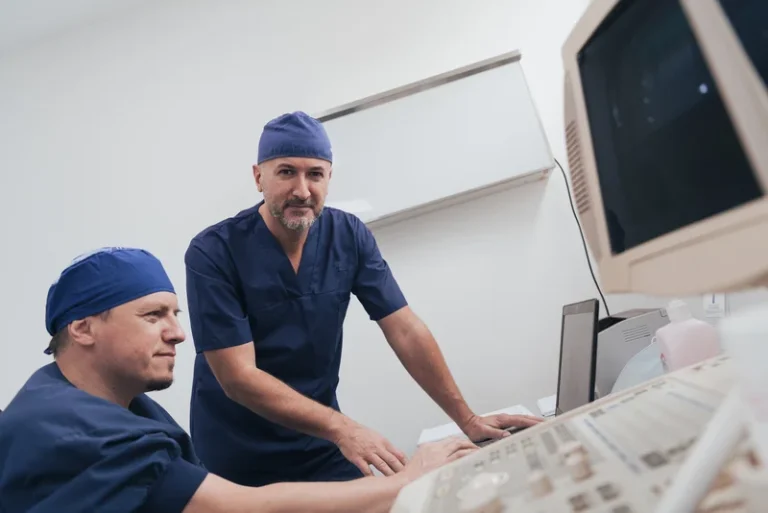Give us a call or complete our convenient online form to get in touch with one of our treatment specialists. Do not allow COVID-19 to stop you from seeking the care you need. We are here to answer your questions and alleviate any concerns. So, it is probably in your best interest to stay away from both drugs before it is too late. Another thing that may come as a surprise to some as that some users prefer Molly over Ecstasy because of its purity and the fear of what could happen if you take Ecstasy.
Purity and Adulteration Concerns
People still use ‘ecstasy’ to refer to party drugs in pill form. The term is also commonly used by older people first exposed to the drug through the rave scene. The chemical that is mostly responsible for the euphoria and energy people get from molly and ecstasy is MDMA, a synthetic drug that changes mood and perception. It’s chemically similar to both hallucinogens and stimulants, producing pleasure, warmth, increased energy and distorted perception. For individuals with co-occurring mental health and substance use disorders, dual diagnosis treatment is crucial. This approach simultaneously addresses both conditions, recognizing the intertwined nature of mental health and substance abuse.
Therapy and Counseling
While molly is assumed to be purer than ecstasy, molly can also be cut with other substances in the same way as ecstasy. Drugs marketed as molly on the street may not even contain MDMA, instead including substances like methylone, pentedrone, 4-MEC, MDPV or other substances. Molly and ecstasy are both MDMA, but they represent two different forms of the drug. With ecstasy, however, the people who make it typically add other substances. Combining ecstasy molly and ecstasy difference with cheaper substances, for example, saves dealers money because they use less MDMA. This is why it is important to detox in a professional treatment facility, as the team can address withdrawal symptoms and support a person through the process.
How to Stop Cocaine Addiction
Despite its initial allure, the drug’s impact turned out to be more devastating than anticipated. At Maple Moon Recovery, we understand the challenges that come with MDMA addiction. Our evidence-based treatment programs provide the support needed to break free from substance dependence and regain control of life. There is no completely safe way to use MDMA, but harm reduction strategies can minimize risks.
- MDMA appears in crystalline form or powder form when it’s at its purest.
- However, molly often contains additives and fillers, making it impure as well.
- Molly drug, commonly found as a crystalline powder, is sometimes ingested in its pure form or encapsulated.
- This is why hydration is key in preventing major side effects from worsening.
- These adulterants significantly increase the risk of negative health effects, including overdose.
Long-Term Effects
Emergency room visits due to MDMA-related incidents escalated over time, prompting heightened awareness about its dangers. The allure of Ecstasy’s temporary euphoria was overshadowed by the long-lasting harm it could inflict on physical and mental health. The allure of euphoria and emotional connection offered by these substances can lead to repeated use, increasing the risk of psychological dependence. Over time, the brain may start to rely on Molly and Ecstasy for emotional regulation, potentially spiraling into addiction. The allure of Ecstasy’s temporary euphoria was overshadowed by the long-lasting harm it could inflict on physical and mental health. Contrary to some beliefs, MDMA can lead to psychological dependence.
We will look at Molly vs. Ecstasy and how they differ and what steps you can take to treat dependence on MDMA. Gateway Foundation can help you through every stage of your recovery journey, whether you’re currently in treatment or aftercare. An addiction specialist can help you determine which option would be best for you by assessing your history with MDMA and the severity of your addiction.
Pure molly is believed to be free from adulterants, such as methamphetamine. However, in reality, molly can still be cut with other drugs in the same way as ecstasy can. Its chemical name is MDMA, short for 3,4-methylenedioxymethamphetamine. Originally developed in the early 20th century for therapeutic purposes, its recreational use surged in the late 20th century. For those necessitating extended care, our center provides an array of long-term drug rehab programs in Illinois.
The purity of Molly can vary greatly depending on the source, making it difficult to know exactly what you are consuming. MDMA, also known as ecstasy or molly, is a synthetic psychoactive drug that alters mood and perception. Classified as a stimulant with hallucinogenic properties, it produces feelings of increased energy, euphoria, emotional warmth and distortions in sensory and time perception. These substances might share similar effects, but they differ in composition, form, and street names. It’s vital to make informed choices and prioritize personal well-being over momentary pleasures. Remember, seeking help for drug addiction is never a sign of weakness but a step towards a healthier and happier life.
Regardless of the form, both substances carry significant risks and can have severe consequences for those who use them. Molly and Ecstasy are both party drugs but they are not the same thing. Let us know more about the difference between ecstasy and molly. Molly and ecstasy are different forms of the same synthetic drug with the scientific name methylenedioxymethamphetamine (MDMA). MDMA appears in crystalline form or powder form when it’s at its purest. While molly and ecstasy are slang terms for the same drug, there are a few distinctions between the two substances.
You can fill out this form or call us directly
MDMA also has hallucinogenic properties and can alter a user’s perception. They may want to look into their treatment options for overcoming the use of ecstasy or molly. Taking these drugs often starts as a recreational habit that can turn to a deadly addiction. Especially when these drugs get cut with some of the most addictive additives. People may also be more prone to panic attacks and seizures when taking the drug. Users often experience extreme depression as the drug wears off.
MDMA addiction is a real threat, especially for young individuals. Since the drug messes with the chemical balance in the brain, it’s very easy to develop addictive habits. Clubgoers often take it as a way to achieve euphoria and to help them to party for longer. People use MDMA in this way because it can create a false sense of intimacy. This high often leads to decreased anxiety and a false sense of intimacy with people.
If you need party drugs to have fun, it’s important to explore the reasons why. Reach out to Awakenings Treatment Center to learn more about our outpatient programs and how they can help you start fresh. As soon as it became popular on the streets, it morphed into a substance that could be mixed with any of roughly 300 other synthetic chemicals, including gasoline and paint thinner. ‘Molly’ and ‘ecstasy’ are recreational party drugs commonly used to enhance experiences at clubs, festivals, concerts, house parties, raves and other entertainment venues. While both substances belong to the same chemical family, they have distinct characteristics that set them apart. Originally, Molly’s roots trace back to MDMA, a substance once considered for therapeutic purposes.
Long-term MDMA abuse damages brain areas involved in memory, decision-making, and impulse control. Despite its reputation as a “party drug,” MDMA (ecstasy/molly) is highly addictive. Recognizing the signs can motivate getting needed treatment before it’s too late. Ecstasy, also known as MDMA (3,4-methylenedioxymethamphetamine), is a synthetic psychoactive drug that acts as a stimulant and hallucinogen. It causes dilated pupils and increases serotonin, dopamine, and norepinephrine levels in the brain, leading to feelings of euphoria, emotional warmth, and heightened energy. While party drugs may not have the same stigma as opioids, they are still dangerous substances that can cause negative effects, overdose and death.
Addiction Treatment Services
While some may crush the pills to snort them and get the effects quicker. If you or someone you care about is seeking support for substance abuse and addiction challenges, we are here to offer our assistance. The effects of MDMA (Molly) can vary from person to person and depend on various factors such as the dose, purity, individual metabolism, and overall health. Based on the search results, the effects of MDMA typically last for several hours, with an average duration of 2 to 4 hours.
At Luxe Recovery, we offer a wide range of treatments for substance use disorders, including MDMA use. To people who use MDMA, the differences between molly and ecstasy can be stark, and a lot of habitual users may find themselves worrying about their drug addiction. The effects of ecstasy can vary due to dosage, metabolism, and other substances in the body.
People often choose outpatient treatment if they have outside responsibilities to maintain while overcoming addiction, such as childcare, education or work. The intensity of outpatient programs can vary, with some attending treatment every day or a few times per week for several months. Since mental disorders and addiction go hand in hand, we offer dual diagnosis treatment programs. These often help our expert staff get to the root cause of your addiction. It also helps prevent a mental disorder from feeding your addiction and vice versa.
MDMA, Molly, and ecstasy all carry risks, especially when abused. Insomnia and sleep deprivation caused by excessive MDMA use can lead to short-term amphetamine psychosis and memory loss. Since MDMA increases your heart rate, using too much Molly or ecstasy can create cardiovascular problems that can be exacerbated by dehydration. Did you know that the dosage of Molly and Ecstasy can significantly influence your experience? While both substances are popular for their euphoric effects, the amount you consume plays a crucial role in how they affect you.
Those under the influence feel as though they can dance and party all night long. Many different types of drugs are being labeled and sold as MDMA. Yet, tests show only about 13% of these drugs contain some trace of MDMA. This makes them more appealing and easy to consume in a party environment.





















